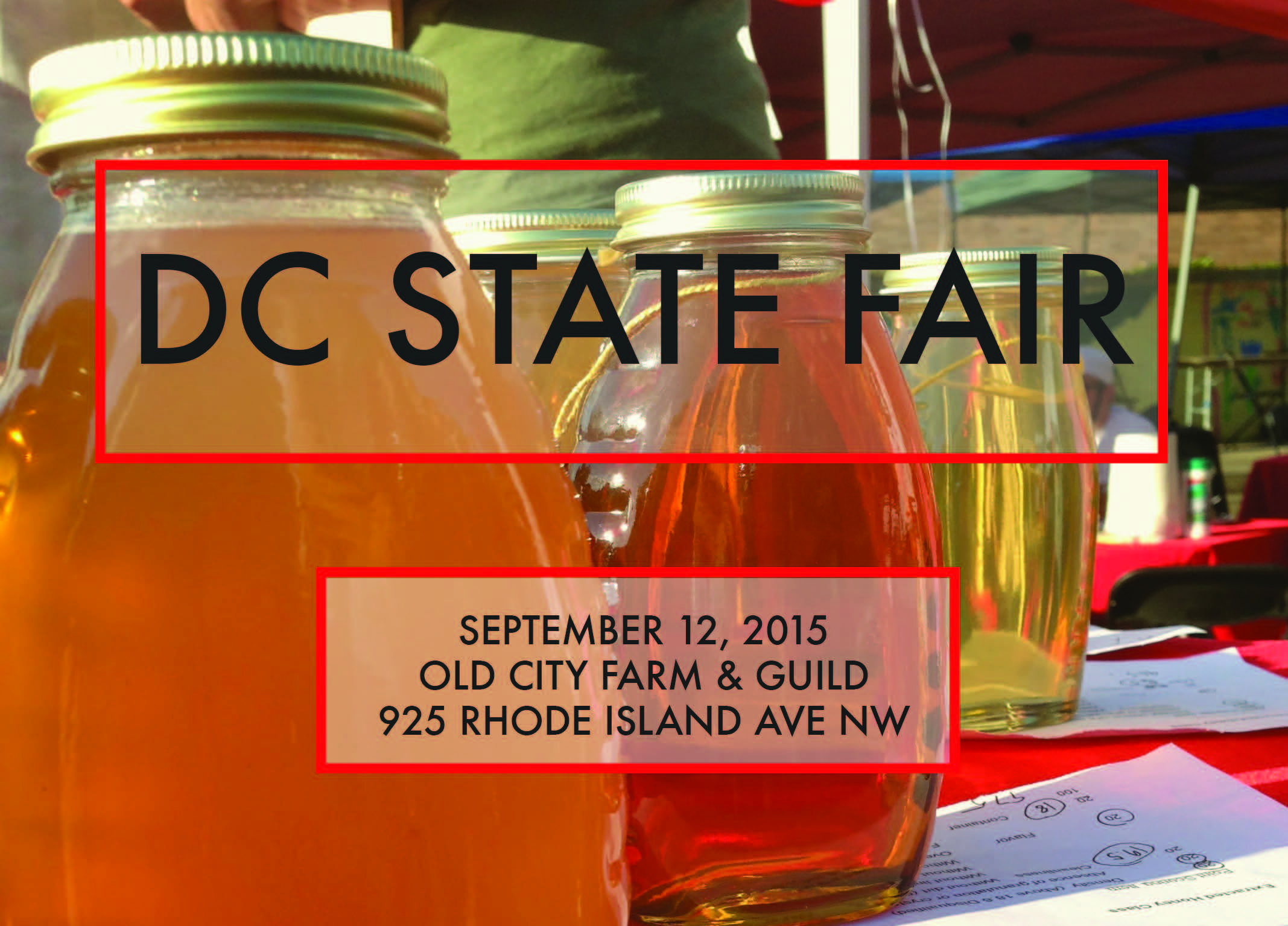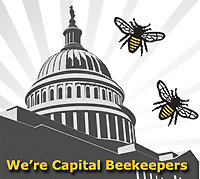DC State Fair Honey Competition
Honey! Pie! Pickles! Veggies! Fruits! Jam! It's Fair Time in Washington!
On Saturday, September 12 beekeepers in DC will once again participate in the DC State Fair! Beekeepers who are residents of DC are invited to enter their honey to be judged by David Morris, an EAS-Certified Master Beekeeper and honey show judge, and we will offer awards including traditional ribbons as well as gifts from our sponsors. This is a great chance to learn more about creating and delivering superior hive products amd to represent ourselves to the rest of the community!
The 2015 DC State Fair will be held at Old City Farm and Guild, 925 Rhode Island Ave NW, Washington, DC. Old City Farm is easily reachable via Metro on the Yellow and Green lines – A few blocks from Shaw Metro Station.
You can enter the fair by completing the entry form and bringing your honey to the fair on the morning of the competition. You can work with me (email dcbees@dcbeekeepers.org) if you need help getting your entry to the Fair. The DC State Fair advises contestants to contact Wendy Caron at wendy@thedcstatefair.org with questions on any of the contests.
Judges at the DC State Fair will use the following criteria to evaluate entries to the honey competition this year.
JUDGING EXTRACTED HONEY
Submissions should be in a clear, glass jar with no imprints or labels, so no Mason (canning) jars. Minimum size is 8 oz, one pound is preferred. This contest is for only honey; no comb honey. All beekeepers and hives entering the contest must be a residents of the District of Columbia to be eligible to compete in this honey competition. Points/Scoring Item 20: Density (Moisture content over 18.6% - DISQUALIFIED) 20: Absence of granulation or crystallization 20: Cleanliness: absence of lint, dirt, wax and foam 20: Flavor: absence of flavors not produced by bees 20: Container appearance: cleanliness and uniformity Judging criteria for liquid (extracted) honey
- Density or Moisture Content: All honey contains moisture or water; honey is really a variety of sugars dissolved in water. Excess moisture increases the growth of yeast cells that naturally occur in honey and can result in fermentation which will spoil the honey and make it unfit for human consumption. Judges often use a cut-off pont of 18.6% and disqualify entries with additional moisture. This level (18.6%) is based on considerable research and honeys with moisture levels over that amount are much more likely to ferment than honeys with lower water levels. Containers of honey with moisture levels over 18.6% do appear very watery (fluid) to the naked eye.
- Absence of Granulation or Crystallization: All honey will eventually solidify (granulate or crystallize) even though the process may take from several months to many, many years. Crystallization is the term usually used to describe liquid honey which has been solidified under controlled conditions, and granulation describes liquid honey that has solidified under natural or uncontrolled conditions. Neither crystallization nor granulation are good attributes for liquid honey prepared for judging or for sale. The presence of crystals or granules can usually be detected in the honey if they occur in more than a very small amount, and they give an uneven or gritty appearance to the honey. This can result in two problems. The first is a minor cosmetic problem and many consumers assume that crystallized or granulated honey is spoiled and they will either not purchase it or discard it if the granulation process becomes apparent after the honey is placed in the home. A more serious problem is that the formation of granules/crystals in liquid honey will increase the moisture content of the remaining liquid portion of the product which can lead to fermentation. Judges will subtract points for honey that is granulated or crystallized.
- Cleanliness: Cleanliness including lint, dirt, wax, and foam are among the most easily controlled factors by the beekeeper The terms are self-explanatory with the possible exception of foam, which refers to air bubbles trapped in the honey.
- Flavor: Flavor is a very subjective characteristic. In this situation the use of flavor as a factor in judging honey will be limited to checking for off flavors not produced by the bees.
- Container Appearance: Honey should be presented in a clear glass jar with no imprints or labels ( and no Mason/canning jars). The minimum size is 8 oz, but one pound jars are preferred. The judges will pay special attention to the cleanliness and lack of wear to the container and its lid. This attention to container and lid cleanliness includes the inside of the lid.
